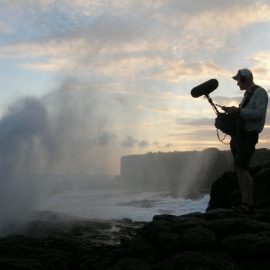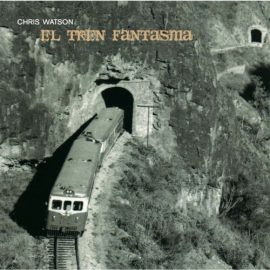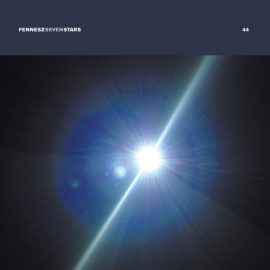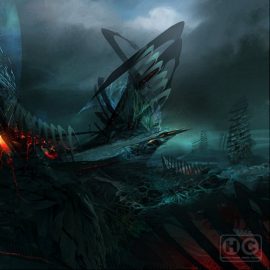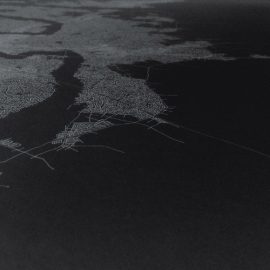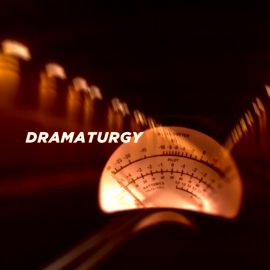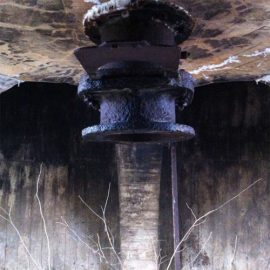 Chris Watson In St Cuthbert’s Time Touch Why do I keep returning to field recordings by Chris Watson? I suppose the answer is similar to the reason behind watching visually stunning BBC documentaries like Planet Earth and Blue Planet. And just as I chase the higher definition quality of those shows, so do I rely on this award-winning wildlife sound recordist to deliver the highest production quality archive of a particular sonic environment. In the case of his latest release on Touch, titled In St Cuthbert’s Time, there is an associated concept that plays a key role in this aural piece of captured time and place. Watson subtitles this four-track hour-long release as “The Sounds of Lindisfarne and the Gospels”. And before diving deeper, we shall allow Watson to explain: “Throughout human history artists have been influenced by their surroundings and the sounds of the landscape they inhabit. When Eadfrith, the Bishop of Lindisfarne, was writing and illustrating the Lindisfarne Gospels on that island during the late 7th C. and early 8th C. he would have been immersed in the sounds of Holy Island whilst he created this remarkable work. This production aims to reflect upon the daily and seasonal aspects of the evolving variety of ambient sounds that accompanied life and work during that period of exceptional thought and creativity.” On the surface of the record, there is nothing more than the sounds of wildlife, dominated by birds, insects, and occasional reptiles. The habitat’s weather adds a backdrop to each piece, making the sound cold, dark or humid. But dig further, and the meditative state of the album opens up, placing one into an exotic climate, exploring its depths and mysterious secrets. And when each phonic snapshot concludes, I realize that I’m back in my [head] space, warm, sterile and dry. And so I hit play again.
|
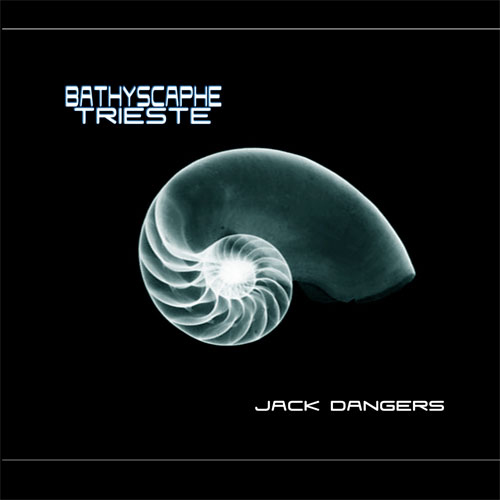 Jack Dangers Bathyscaphe Trieste Primary Numbers I absolutely love the mysteries of this record! When I first held the CD in my hand, the cover art of an X-rayed shell conveyed the inner riddles of nature with its golden ratio spirals. The back of the album features a photograph of a massive submarine in dark green waters of ocean, where light barely seeps. And then the name of the composer, Jack Dangers… now where have I heard that name before? It can’t be the same person behind the Meat Beat Manifesto project which I’ve known since the 90s, now can it? Why, yes indeed, it is the same ‘ol Dangers, who has been reserving the releases under his real name for deeper explorations in sound, featuring analog synths and tape manipulations, with records such as Forbidden Planet Explored (Important, 2004) and Music For Planetarium (Brainwashed, 2008). Ok, but I didn’t know that Dangers was also into deep-sea journeys, capturing the low rumbling howls of barely audible sounds in an isothermal environment. And here comes the last surprise of Bathyscaphe Trieste, named after a 1960 two-person free-diving self-propelled deep-sea submersible, which reached a record depth in the deepest known point of Earth’s seabed hydrosphere, called The Challenger Deep. The seven pieces on the record are not some captures via hydrophone at all! “Dangers’ composition honoring this journey is the product of years of work, featuring super slowed down tape manipulations of analog synthesizers (often 30x as slow), bounced from machine to machine to achieve the appropriate soundtrack for a vessel on an exploratory journey into uncharted depths under massive amounts of physical pressure.” Dangers successfully recreated the sounds at the bottom of our world, and while he certainly fooled me, he also delighted in the process!
|
|
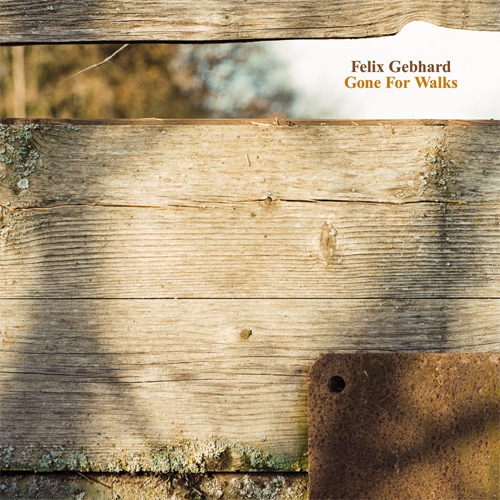 Felix Gebhard Gone For Walks Tessellate While composing this Sound Bytes entry on field recordings, my friend and I discussed the concept of ‘art’, and more specifically bare captures of sounds in nature. He argued that placing a microphone in an open field should not be called art, while I contended that ‘art’ defines a message communicated between the producer and consumer of the sound, and if such message is received, the goal has been accomplished. “But what did the recordist do?” So I explained that just as producing the wildlife documentaries by positioning the eye (camera) at appropriate time and place, so can the ear (microphone) be considered artful. We finally agreed, that if there was some man made sound played over such field recordings, the piece would surely be considered music. Which brings me to this album. Gone For Walks is the result of Felix Gebhard‘s escape from the Berlin city life into the rural region of Germany’s Elbe River, near his mother’s village house. The four pieces, titled after the particular times during which the field recordings were captured, are accompanied by layers of improvised instrumentation. “Felix strived to visualize the landscape and region by focusing on small sonic and visual details along the way. There was never the intention to stereotype an urbanite’s view on agriculture and country living but somehow the record finds itself being just that.” The result is a perfect marriage between nature and music, a form of art on which my friend and I agree.
|
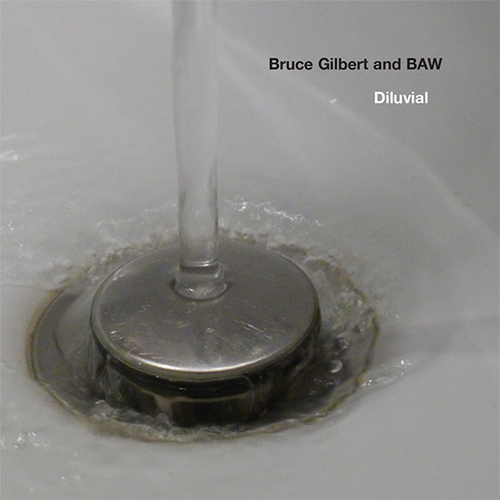 Bruce Gilbert and BAW Diluvial Touch With the basic material including field recordings from beaches in Suffolk and London (recorded by Naomi Siderfin, half of Beaconsfield ArtWorks), Diluvial originates from “local preoccupation with rising sea levels – a work that dwells on the dynamics of flood geology and global warming; creation stories and climate change”. The basic material may consist of field recording of natural sounds, but the synthesized sounds generated by Bruce Gilbert (founding member of art-punk band Wire and a pioneer of experimental noise) and David Crawforth (the other half of BAW) in response to those recording take it to a completely different electroacoustic level. The result is a 74-minute soundscape, divided into seven tracks “alluding to the mythical seven days of creation“, guided by the track titles “The Void“, “The Expanse“, “Dry Land“, “Lights“, “Creatures of Sea and Air“, “Beast of the Earth” and “Rest-Reflection” – the latter being the only one featuring traces of rhythm. Diluvial was originally created as a Soundtrap V performance for in 2011, but we can consider ourself very lucky that the specialised Touch label has decided to release this album separately. Field recordings and the fear of a devastating flood due to sea levels rising faster than expected have never been recorded and interpreted more hauntingly than this! For more from Gilbert, check out his 2009 release, Oblivio Agitatum, on Editions Mego, as well as In Esse (Mute, 1997) and Ab Ovo (Mute, 1996).
|
|
©
Review of Diluvial by Peter van Cooten of Ambient Blog.
All other reviews by HC.
